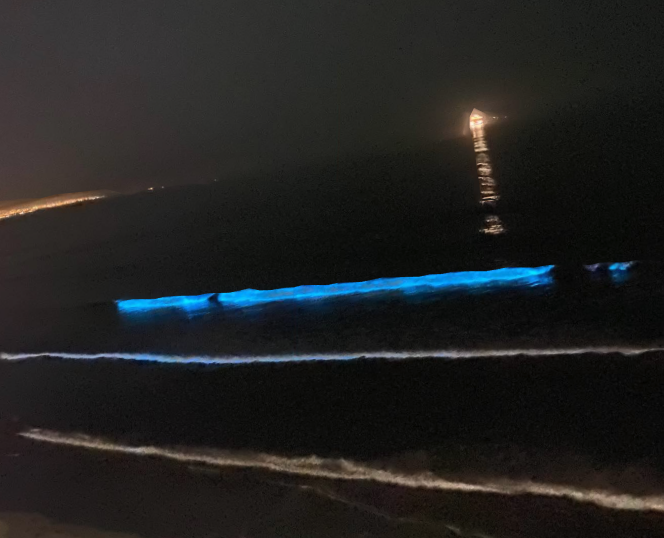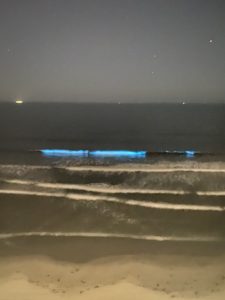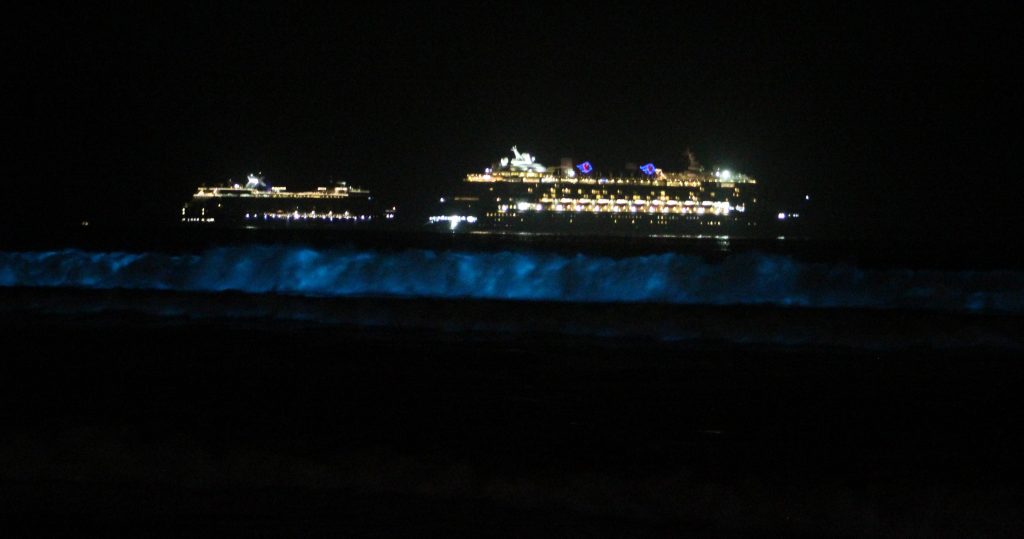
Coronado beaches usually draw daytime crowds seeking the pristine white sand and sun. Recently though, people have flocked to our beaches at night to observe the magical blue glow of the ocean waves — bioluminescence. This phenomenon is caused by marine plankton, dinoflagellates, in the large algae bloom known as a “red tide” because it causes the water to appear red during the day. The bloom occurs when environmental conditions allow growth of the plankton. The recent bloom is due to the nutrient rich runoff from heavy rains earlier this spring. These bioluminescent organisms emit radiant blue light when disturbed, such as when the waves crash on the shore. Historical records from the Scripps Institution of Oceanography show the bioluminescent red tide was first documented in the early 1900s, but only appears every couple years. Coronado residents have been enjoying the bioluminescent spectacle of this red tide since the end of April and scientists have no way to predict how long this will last. In May 2018, the red tide lasted only a few days while the October 1995 red tide lasted a month. This year, the red tide stretches all the way from Baja California to Santa Barbara.

Some red tides are toxic to marine life and dangerous for humans who eat food from the ocean. However, the type of red tide currently present along the California coast is non-toxic so presents no known health risk.
During the continued shelter in place health order, Coronado beaches remain closed after 6 pm. Residents wishing to view the bioluminescence can walk along the bike path by the Hotel del Coronado and the Shores condominiums while maintaining social distancing guidelines. Some prime Coronado viewing spots to witness this nighttime nature show are the walkway by Shores beach and near the Coronado Cays entrance. Prime viewing times are two hours after sunset to ensure optimal darkness.





